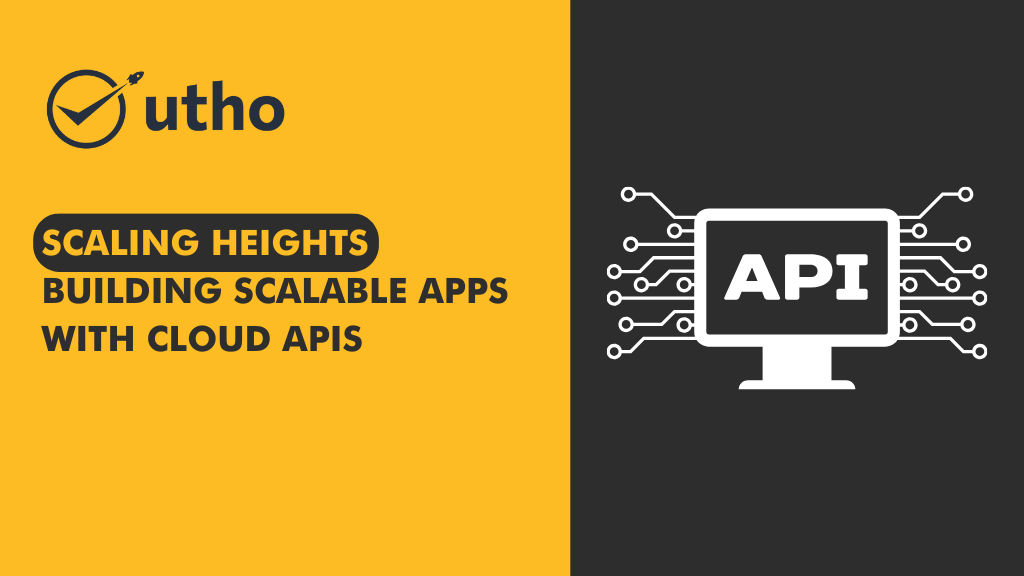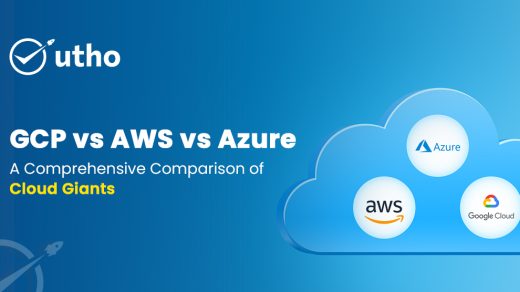Scaling applications efficiently is essential in today's digital landscape. Utilizing cloud APIs is a fundamental approach to achieving this goal. By leveraging cloud APIs, developers can seamlessly allocate resources, automate scaling processes, and efficiently manage applications. In this article, we'll delve into the strategies for harnessing cloud APIs to build scalable applications, empowering businesses to innovate and thrive in a dynamic market environment.
How can cloud APIs contribute to the scalability of modern applications?
Cloud APIs, or Application Programming Interfaces, play a crucial role in enhancing the scalability of modern applications in several ways:
Elasticity: Cloud APIs allow applications to dynamically scale resources up or down based on demand. This means that when there's a surge in users or workload, the application can quickly provision additional resources from the cloud provider to handle the increased load, ensuring optimal performance without manual intervention.
Auto-scaling: With cloud APIs, developers can configure auto-scaling policies based on predefined metrics such as CPU utilization, memory usage, or incoming traffic. When these thresholds are reached, the API triggers the automatic scaling of resources accordingly. This proactive approach ensures that applications remain responsive and available even during peak usage periods.
Resource Provisioning: Cloud APIs provide access to a wide range of infrastructure resources such as virtual machines, containers, databases, and storage. Developers can programmatically provision and manage these resources through APIs, enabling on-demand allocation of computing power and storage capacity as needed, thereby optimizing resource utilization and minimizing costs.
Global Reach: Many cloud providers offer data centers located in various regions worldwide. By leveraging cloud APIs, developers can deploy their applications across multiple geographic locations effortlessly. This not only improves performance by reducing latency for users in different regions but also enhances fault tolerance and disaster recovery capabilities.
Integration and Interoperability: Cloud APIs facilitate seamless integration with other cloud services and third-party applications, allowing developers to leverage a wide array of functionalities without reinventing the wheel. This enables rapid development and deployment of feature-rich applications by leveraging existing cloud-based services such as authentication, messaging, analytics, and machine learning.
DevOps Automation: Cloud APIs enable automation of various DevOps processes such as continuous integration, deployment, monitoring, and management. By integrating cloud APIs with CI/CD pipelines and configuration management tools, developers can automate the deployment and scaling of applications, leading to faster release cycles, improved reliability, and reduced operational overhead.
Cloud APIs empower developers with the tools and capabilities needed to build scalable and resilient applications that can dynamically adapt to changing workloads and user demands, ultimately enhancing the efficiency, performance, and agility of modern software systems.
What are some common challenges developers face when building scalable applications with cloud APIs, and how can they be overcome?
Developers encounter several challenges when building scalable applications with cloud APIs. Here are some common ones along with potential solutions:
Managing Complexity: Cloud environments can be complex, with numerous services, APIs, and configurations to navigate. This complexity can make it challenging for developers to understand and utilize cloud APIs effectively. To overcome this, developers should invest time in learning the cloud provider's documentation thoroughly and consider leveraging abstraction layers or SDKs that simplify interaction with cloud services.
Scalability Limitations: While cloud APIs offer scalability features, developers need to design their applications with scalability in mind from the outset. Failure to do so may result in bottlenecks or performance issues that hinder scalability. By adopting architectural patterns like microservices, containerization, and serverless computing, developers can build applications that scale horizontally and vertically to meet growing demands.
Vendor Lock-in: Depending heavily on proprietary cloud APIs can lead to vendor lock-in, limiting flexibility and making it difficult to migrate to alternative cloud providers in the future. To mitigate this risk, developers should adhere to industry standards and best practices, use abstraction layers or middleware to decouple applications from specific cloud services, and architect applications in a modular and interoperable manner.
Performance and Latency: Over Reliance on cloud APIs for critical operations can introduce performance bottlenecks and latency, especially in distributed systems spanning multiple regions. Developers can address this challenge by optimizing API usage, implementing caching mechanisms, leveraging content delivery networks (CDNs) for static content, and strategically placing resources closer to end-users to minimize latency.
Security and Compliance: Integrating third-party cloud APIs into applications introduces security risks such as data breaches, unauthorized access, and compliance violations. Developers must implement robust security measures such as encryption, authentication, authorization, and audit logging to protect sensitive data and ensure compliance with regulatory requirements. Additionally, they should stay informed about security best practices and monitor for security vulnerabilities in third-party APIs.
Cost Management: While cloud APIs offer scalability, developers must be mindful of cost implications, as excessive resource usage can lead to unexpected expenses. To optimize costs, developers should leverage cloud provider's cost management tools, implement resource tagging and monitoring, utilize cost-effective instance types, and implement auto-scaling policies to dynamically adjust resources based on demand.
By addressing these challenges proactively and adopting best practices for designing, deploying, and managing applications in the cloud, developers can build scalable, resilient, and cost-effective solutions that meet the evolving needs of their users and businesses.
How does Utho Cloud provide the most extensive APIs for developing scalable applications?
Utho Cloud offers an extensive array of APIs for building scalable applications through several key features and capabilities:
Diverse Services: Utho Cloud provides a wide range of services spanning compute, storage, networking, databases, analytics, AI, and more. Each service comes with its set of APIs, allowing developers to leverage these functionalities programmatically to build scalable applications tailored to their specific requirements.
Comprehensive Documentation: Utho Cloud offers thorough documentation for its APIs, including guides, tutorials, sample code, and reference documentation. This comprehensive documentation helps developers understand how to use the APIs effectively, accelerating the development process and reducing time-to-market for scalable applications.
Standardized Interfaces: Utho Cloud APIs adhere to industry standards and protocols, ensuring interoperability and ease of integration with existing systems and third-party applications. By following established standards, developers can seamlessly incorporate Utho Cloud services into their applications without the need for extensive custom integration efforts.
Scalability Features: Utho Cloud APIs are designed to support scalability requirements, allowing applications to dynamically scale resources up or down based on demand. Developers can programmatically provision additional compute instances, storage capacity, or other resources using APIs, enabling applications to handle varying workloads effectively while maintaining optimal performance.
Developer Tools: Utho Cloud offers a suite of developer tools and SDKs (Software Development Kits) that simplify the process of working with APIs. These tools provide features such as code generation, debugging, testing, and monitoring, empowering developers to build and manage scalable applications more efficiently.
Integration Capabilities: Utho Cloud APIs enable seamless integration with other Utho Cloud services as well as third-party platforms and applications. This integration flexibility allows developers to leverage a wide range of functionalities, such as authentication, messaging, analytics, and machine learning, to enhance the scalability and capabilities of their applications.
Overall, Utho Cloud's extensive APIs, coupled with comprehensive documentation, standardized interfaces, scalability features, developer tools, and integration capabilities, provide developers with the necessary resources and flexibility to build scalable applications effectively and efficiently.
How do cloud APIs enable horizontal and vertical scaling in application architecture?
Cloud APIs facilitate both horizontal and vertical scaling in application architecture through different mechanisms:
Horizontal Scaling
Definition: Horizontal scaling, also known as scaling out, involves adding more instances or nodes to distribute the workload across multiple machines.
Cloud API Role: Cloud APIs enable horizontal scaling by providing features such as auto-scaling and load balancing. Developers can programmatically configure auto-scaling policies that dynamically provision additional instances or containers based on predefined metrics like CPU utilization or incoming traffic. Load balancing APIs distribute incoming requests evenly across multiple instances, ensuring efficient utilization of resources and improved scalability.
Vertical Scaling
Definition: Vertical scaling, also known as scaling up, involves increasing the computing power or capacity of individual instances or nodes.
Cloud API Role: Cloud APIs enable vertical scaling by providing access to scalable resources such as virtual machines and database instances. Developers can programmatically resize or upgrade these resources using APIs to meet growing demands. For example, they can increase the CPU, memory, or storage capacity of virtual machines or scale up database instances to handle larger datasets or higher transaction volumes.
Cloud APIs play a crucial role in enabling both horizontal and vertical scaling in application architecture by providing features for dynamically provisioning resources, distributing workloads, and optimizing resource utilization based on changing demands. This flexibility allows developers to build scalable and resilient applications that can adapt to varying workloads and user demands effectively.
How do cloud API usage patterns differ between startups and established enterprises seeking to build scalable applications?
Cloud API usage patterns can vary between startups and established enterprises seeking to build scalable applications due to differences in organizational priorities, resources, and development approaches:
Startups
Agility and Flexibility: Startups often prioritize agility and speed of development to quickly iterate on their products and gain a competitive edge. As a result, they may favor lightweight and flexible cloud APIs that enable rapid prototyping and experimentation.
Cost Sensitivity: Startups typically have limited budgets and strive to minimize costs while building scalable applications. They may prioritize cloud APIs that offer pay-as-you-go pricing models, free tiers, or generous startup credits to reduce upfront investment.
Focus on Innovation: Startups may prioritize cloud APIs that provide access to cutting-edge technologies and services, such as AI, machine learning, or serverless computing, to differentiate their products and deliver innovative solutions to market quickly.
Established Enterprises
Scalability and Reliability: Established enterprises prioritize scalability, reliability, and robustness when building scalable applications to support their existing customer base and infrastructure. They may opt for cloud APIs backed by service level agreements (SLAs) and enterprise-grade support to ensure high availability and performance.
Integration with Legacy Systems: Enterprises often have legacy systems and existing IT infrastructure that need to be integrated with cloud-native applications. They may require cloud APIs with comprehensive integration capabilities, support for industry standards, and compatibility with on-premises systems to facilitate seamless migration and interoperability.
Security and Compliance: Enterprises place a strong emphasis on security and compliance when selecting cloud APIs for building scalable applications. They may prioritize APIs that offer robust security features, such as encryption, authentication, access controls, and compliance certifications, to protect sensitive data and ensure regulatory compliance.
While both startups and enterprises seek to build scalable applications using cloud APIs, their usage patterns may differ based on factors such as organizational priorities, budget constraints, technological requirements, and risk tolerance. Ultimately, the choice of cloud APIs depends on aligning with the specific needs and objectives of the organization, whether it's rapid innovation, cost efficiency, reliability, or regulatory compliance.
As technology continues to advance and demands grow, the flexibility and efficiency offered by cloud APIs will become increasingly indispensable. With the right approach and utilization of cloud APIs, businesses can future-proof their applications and position themselves for sustained success in the dynamic digital environment of tomorrow.




